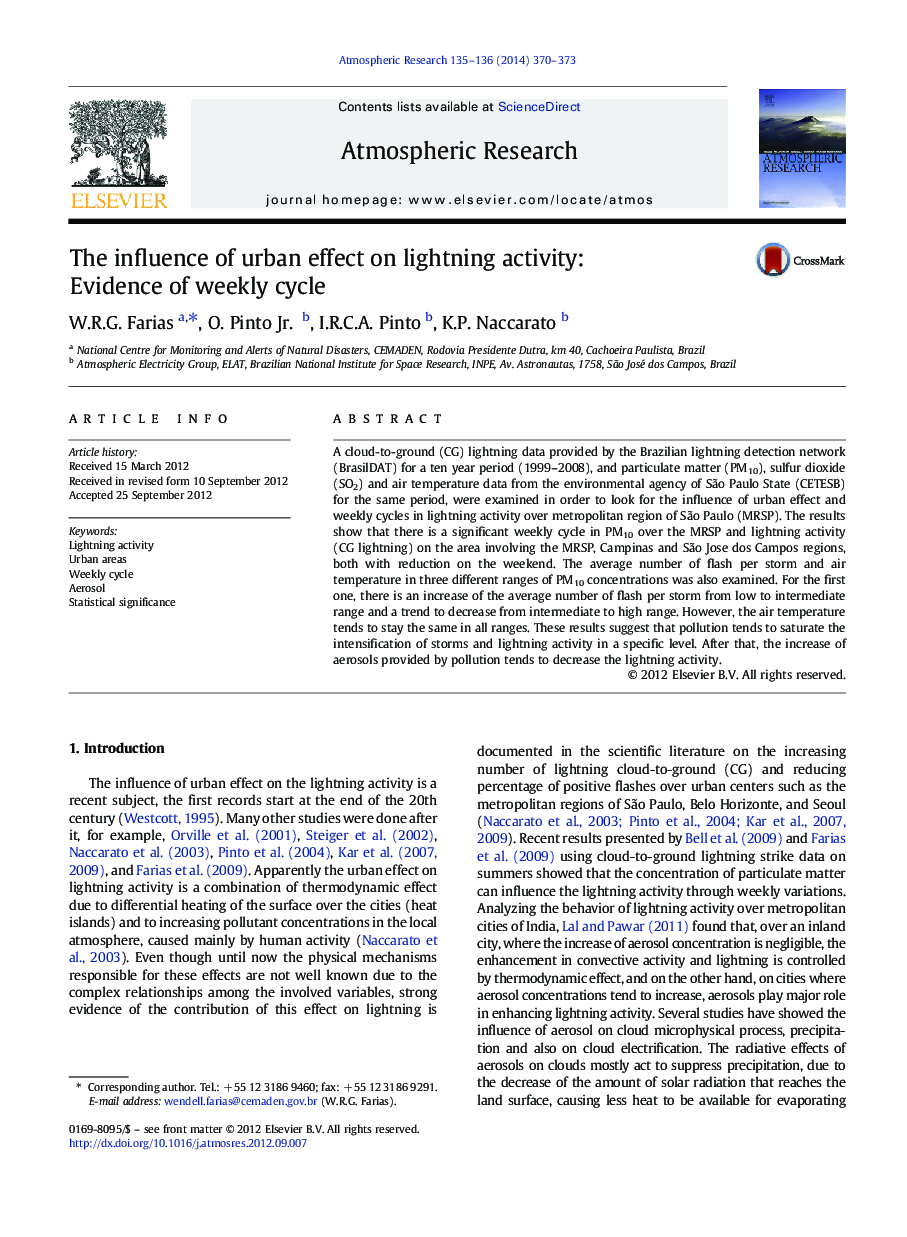| Article ID | Journal | Published Year | Pages | File Type |
|---|---|---|---|---|
| 6343754 | Atmospheric Research | 2014 | 4 Pages |
A cloud-to-ground (CG) lightning data provided by the Brazilian lightning detection network (BrasilDAT) for a ten year period (1999-2008), and particulate matter (PM10), sulfur dioxide (SO2) and air temperature data from the environmental agency of São Paulo State (CETESB) for the same period, were examined in order to look for the influence of urban effect and weekly cycles in lightning activity over metropolitan region of São Paulo (MRSP). The results show that there is a significant weekly cycle in PM10 over the MRSP and lightning activity (CG lightning) on the area involving the MRSP, Campinas and São Jose dos Campos regions, both with reduction on the weekend. The average number of flash per storm and air temperature in three different ranges of PM10 concentrations was also examined. For the first one, there is an increase of the average number of flash per storm from low to intermediate range and a trend to decrease from intermediate to high range. However, the air temperature tends to stay the same in all ranges. These results suggest that pollution tends to saturate the intensification of storms and lightning activity in a specific level. After that, the increase of aerosols provided by pollution tends to decrease the lightning activity.
⺠Weekly cycle on lightning activity over metropolitan regions of Sao Paulo State. ⺠Weekly cycle statistically significant among CG lightning, SO2 and PM10. ⺠Saturation level of PM10 at lightning activity (boomerang effect) over the MRSP.
